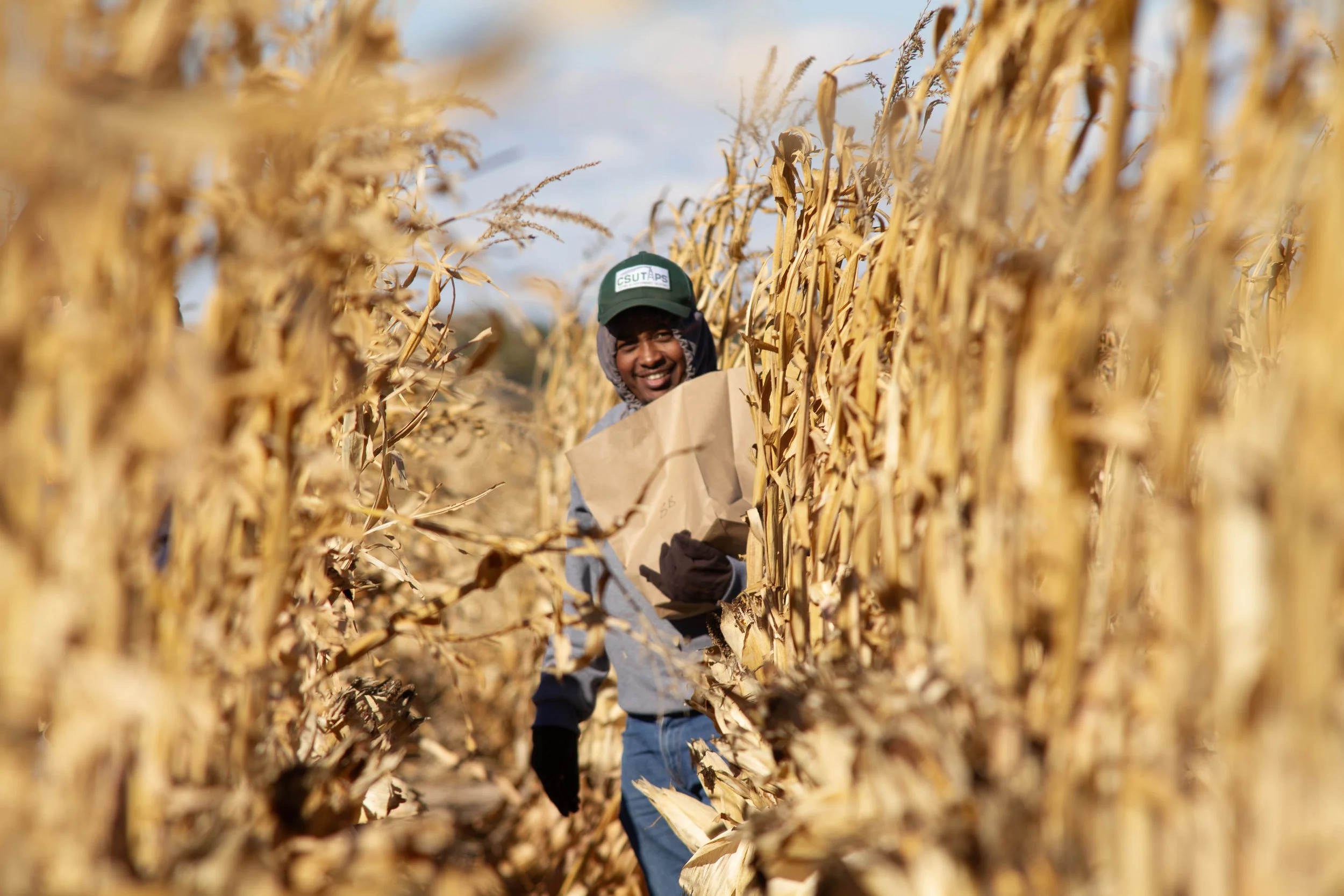Biomass Sampling at the CSU-TAPS 2025 Field
The 2025 CSU-TAPS biomass sampling crew, from left: Wub Yilma, Omer Izrael, and Andy Clark (photo by Christine Hamilton)
Fall fieldwork for CSU-TAPS includes corn plant biomass sampling—a key data collection effort undertaken annually to evaluate crop production and input use efficiency across competition plots.
In the 2025 competition field, the crew gathered 12 corn plants each from 75 field plots, bagging up the cobs and other plant matter separately. The next day, the crew processed these samples for lab analysis, breaking down the leafy matter and shucking grains from cobs to get an initial assessment of corn grain test weights (weight in pounds per bushel) and moisture from each plot.
This year, Andy Clark, research associate at CSU Agricultural Research, Development, and Education Center (ARDEC) South helped CSU-TAPS Program Manager Omer Izrael and CSU-TAPS Precision Irrigation Manager Wub Yilma with the field gather. The full TAPS team joined in on the sample processing at ARDEC North. Beside the agronomic value of gathering and analyzing biomass, this kind of fieldwork also highlights and fosters deep camaraderie and collaboration between CSU College of Agricultural Sciences and Testing Ag Performance Solutions staff.
The data collected will be used to inform understanding of yield outcomes as they relate to field conditions and the wide range of nitrogen and irrigation strategies employed by CSU-TAPS participants during the growing season.
What Is Corn Biomass Sampling?
Corn biomass sampling involves collecting and measuring the above-ground plant material (stalks, leaves, and ears) at specific growth stages. These data help assess: plant health and vigor; growth rate and development; nutrient uptake and efficiency; potential yield estimation. It also helps the crew determine a harvest date, which can be a challenge, with so many different hybrids growing in the same field maturing at different rates!
Photos by Christine Hamilton










